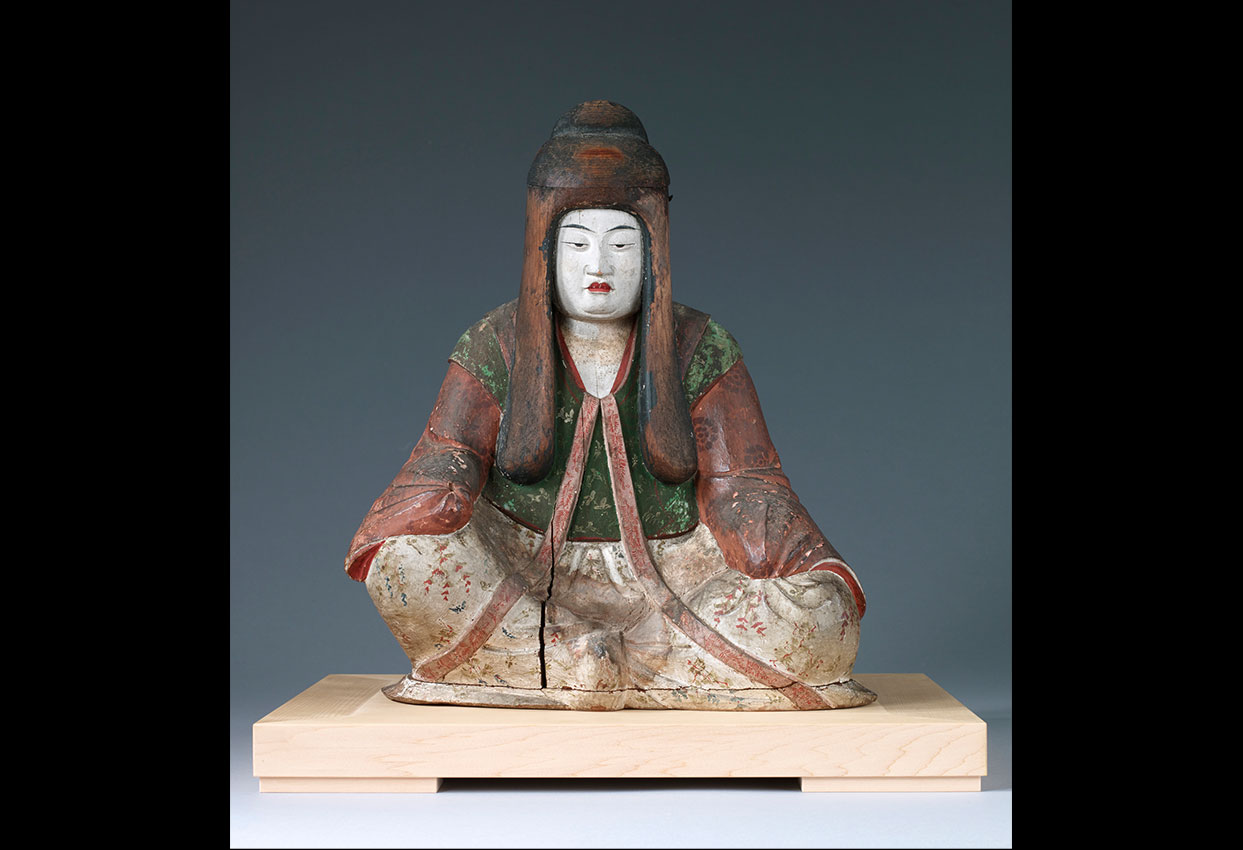19. Images of Hachiman
Inside the main hall of the Yasumigoka Hachimangu Shrine are three statues believed to date back to the early Heian period (794–1185). At the center is an image of Hachiman, the guardian deity of Japan and of warriors, wearing a monk’s robe. To his left sits the Empress Jingu, who ruled in the third century, according to Japan’s oldest extant chronicle, the early eighth-century Kojiki. To his right is Princess Nakatsu, a consort of Emperor Ojin, Empress Jingu’s son.
These images, each crafted from a single block of wood, are the oldest examples of Buddhist images carved from wood, as until the Heian period they had been made almost entirely from bronze. They have a surprisingly imposing appearance given their relatively small size; and the sculpting and coloring of the three images are highly expressive, each figure being made to contrast with the other two.
The sculptures are registered as National Treasures, while the three shrine halls, a sitting room on the west side of the front courtyard, and the six colorful wooden board paintings of deities that grace the back walls of the north and south side halls are listed as Important Cultural Properties.




